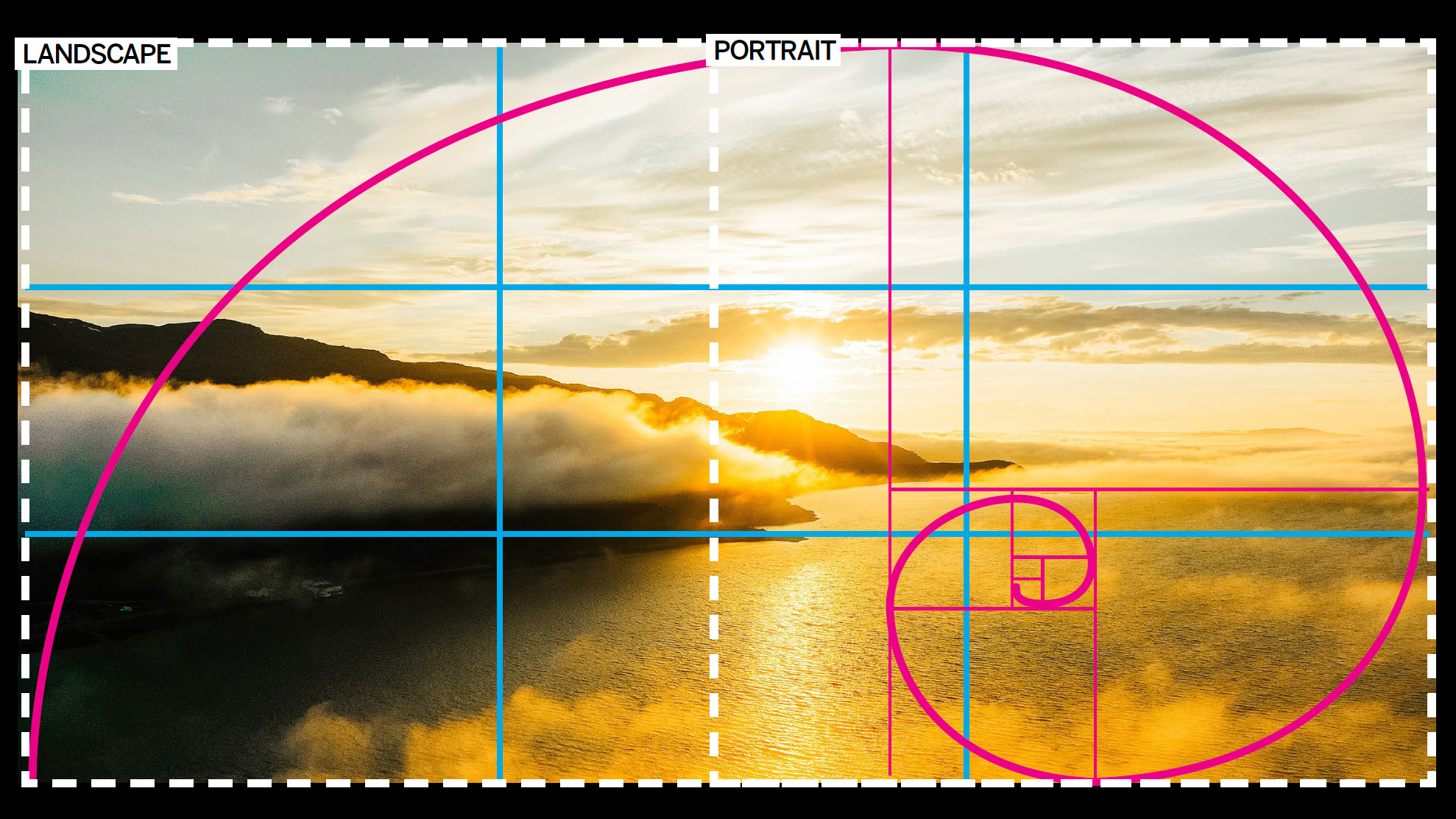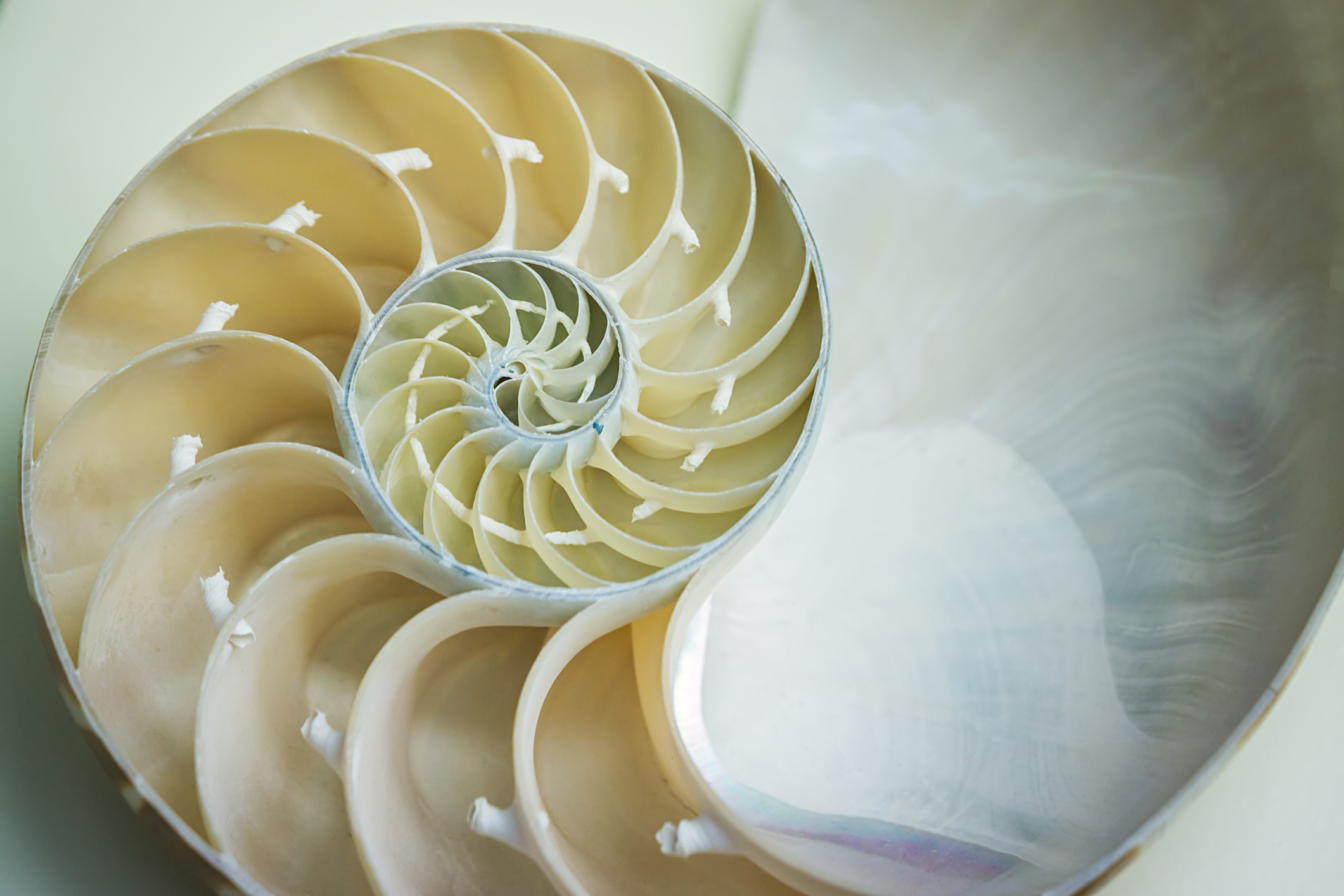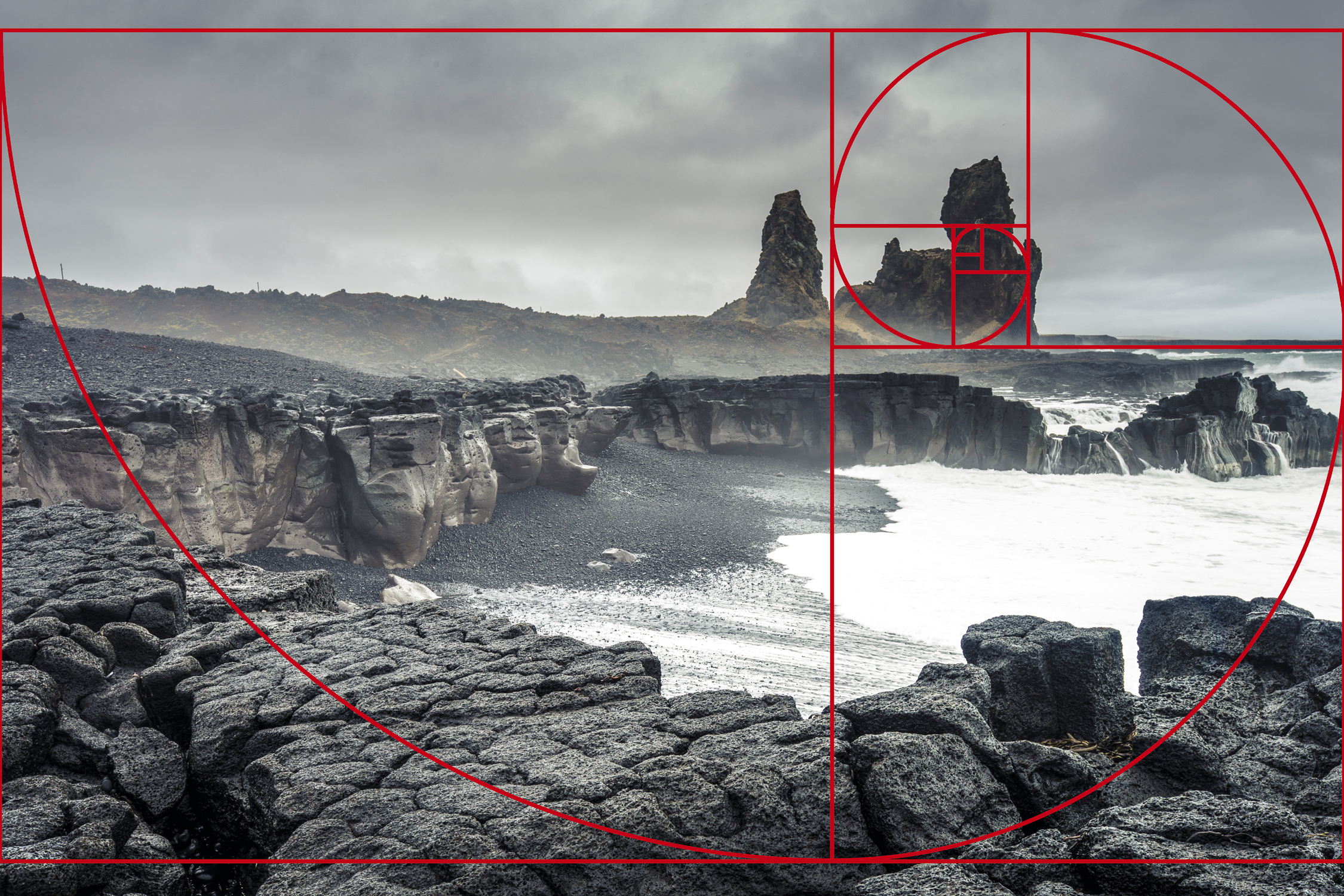Golden ratio photography composition explained
It's been used by artists for centuries, but is golden ratio photography composition as good as the rule of thirds?

What is golden ratio photography composition? It's a unique method of framing your images, distinct from the more commonly used techniques among photographers.
One of the most well-known compositional approaches is the rule of thirds. This involves dividing the frame into thirds both horizontally and vertically (as shown by the blue lines above). Elements in the photo are then arranged around these divisions, with key focal points placed at the intersections of the lines.
The rule of thirds is a simplified version of the golden ratio (represented by the pink lines above), a naturally harmonious proportion that has been utilized in art and architecture for centuries.
So what is golden ratio photography composition?
The golden ratio, also known as the golden mean, golden section, or divine proportion, is widely regarded as beautiful and harmonious. This concept traces its origins to ancient Greek mathematicians and is closely related to the square root of pi. The Greeks discovered the golden ratio while studying five-sided figures like the pentagon.
Essentially, if the points of the Fibonacci sequence are plotted and connected by a curve, they form a Fibonacci spiral, also known as a golden spiral. This spiral intersects at every point where the rectangle is divided according to the golden ratio of 1.618.


Use the golden ratio to crop photography
The Crop tool’s Golden Ratio overlay is based on the famous Fibonacci sequence, and you can use this numerical sequence to break up a shot into a series of differently proportioned shapes. When we see a photo that we admire, we may not consciously be aware that its composition conforms to the Crop tool’s Golden Ratio overlay guide.
When using photo editing software, one crucial factor that influences the overall harmony of your shot is the crop. Cropping is a powerful tool that can make or break your image. When used correctly, it eliminates distracting elements and directs the viewer’s gaze to the main subject. This tool can reveal new perspectives and transform your photos into unexpectedly striking results.
In Adobe Photoshop CC, the Crop tool has other overlays to help you achieve a more pleasing composition. Choose the Golden Ratio photography overlay. Crop the shot and drag it inside the crop window to place key features in various sub-divided sections. Then, simply hit Enter.
The crop tool must be used with care, especially in portrait and fashion photography, as cut-off elements can impact the end result. Cropping images should be handled strategically – keep the ratio of your intended media platform in mind when doing so.

Is the golden ratio better than the rule of thirds?
Since the dawn of photography, artists have been experimenting with different compositions. Over the past few centuries, we've established some fundamental rules to help achieve a decent composition when the scene in front of you seems challenging.
One of the classic compositional approaches is the rule of thirds, which we'll explore in more depth below. The reason this method is so well-known and frequently used is simple: it’s a tried and tested technique that positions and spaces your focal points and horizon to make optimal use of available space and draw the viewer’s eye into the image.
Typically, an image is perceived as more photogenic if the focal point is positioned one-third of the way in from one or two sides, giving it more room to breathe compared to placing it near the edge of the frame. However, as with any rule, these are merely guidelines. If breaking them helps you achieve your creative vision and narrative, don't hesitate to do so.
In photography, the golden ratio is similar to the rule of thirds, as it also divides the frame into nine sections. However, unlike the rule of thirds, the golden ratio uses a ratio of 1:1.618, resulting in unequal sections. The middle horizontal and vertical boxes form a squat 'cross' shape, placing the intersecting lines of the grid more centrally. This positioning draws the viewer's eye toward the heart of the shot, making the golden ratio ideal for compositions with a central focal point.
The mathematical principle of Fibonacci’s spiral, which frequently appears in nature, can also be used to enhance your landscape compositions.
You might also like to read about these 6 classic composition setups, and tips for landscape photography composition with a wide-angle lens.
Get the Digital Camera World Newsletter
The best camera deals, reviews, product advice, and unmissable photography news, direct to your inbox!

James has 22 years experience as a journalist, serving as editor of Digital Camera World for 6 of them. He started working in the photography industry in 2014, product testing and shooting ad campaigns for Olympus, as well as clients like Aston Martin Racing, Elinchrom and L'Oréal. An Olympus / OM System, Canon and Hasselblad shooter, he has a wealth of knowledge on cameras of all makes – and he loves instant cameras, too.
- Lauren ScottFreelance contributor/former Managing Editor
